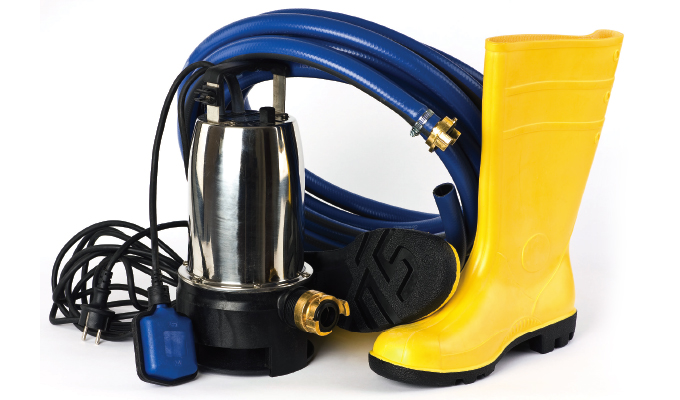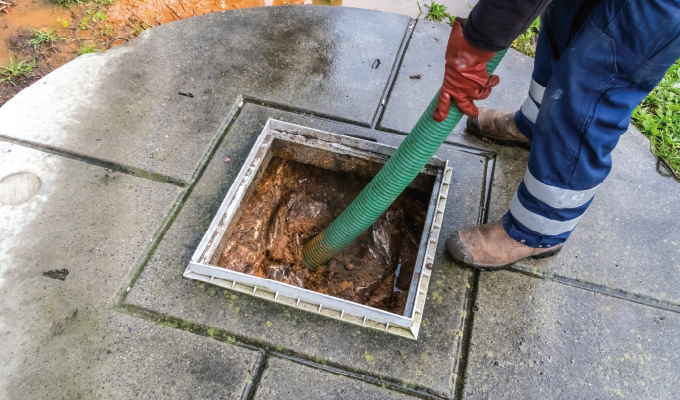A sump pump can be a lifesaver for helping your clients avoid costly flooding damage. However, creating an efficient sump pump requires taking numerous factors into account. Here are some tips to keep in mind when helping customers get the best performance from their sump pumps.
ACCOUNT FOR THE BUILDING SIZE AND SOIL TYPE
The sump pump’s necessary capacity depends on the size of the residence and the type of soil on the property. Every 1,000 square feet of the home requires a capacity of 8 gallons per minute if the house is on clay soil. However, the minimum capacity for best performance rises to 14 gallons if you’re dealing with sandy soil.
If you have already made the sump pit, there’s a more involved test you can do. Start by seeing how much water fills the empty pit during a heavy rainstorm in one minute. Multiply the number of inches by 60 to get a figure representing gallons of water per hour.
Then, multiply what you get by 1.5 to calculate a buffer that will come in handy if a severe storm hits. This final number is the pump capacity you need. However, don’t assume a larger capacity is better. A pump that’s too large for the home will turn on and off frequently, making it wear out faster than it should.
Standard sump pumps have 0.33 horsepower motors. However, you can also get larger 0.5 horsepower models that can remove approximately 3,000 gallons of water per hour. If, while building a sump pump for your client, they ask to have a larger capacity than you recommend, take the time to explain your reasoning. Emphasize that too much capacity could compromise efficiency over the long run by triggering the sump pump to turn on and off too frequently.
CONSIDER BUILDING A SUBMERSIBLE PUMP
When you’re building a sump pump for a client, one of the first things to determine is whether it should be a submersible or standing type. The standing kind has a vertical design with the pump resting below the water, and the motor at the top of the pump, above the surface. In contrast, submersible pumps are single units that can keep operating when entirely underwater.
The waterproof nature of a submersible sump pump is one of its primary advantages. Discuss the realities that your client may not immediately consider when they choose between a standing or submersible sump pump. For example, during an especially intense flood, there’s no guarantee the motor on a standing pump will remain free from water exposure. Relatedly, other issues not related to a storm could get a standing pump’s motor wet, too, such as water above it from a burst pipe.
If your client lives in an area that typically gets hit hard during hurricane season, that’s even more reason to strongly urge them to go with a submersible pump design. Most hurricane-related dangers stem from flooding. More specifically, high winds push the ocean’s water onto land, leading to a storm surge that’s powerful enough to take away vehicles and people.
Talk to your client about how they’ll only have an efficient sump pump if it will keep operating reliably in harsh conditions rather than failing at the worst possible moment. Also, mention how many submersible pumps have an internal pressure switch rather than a floater ball that activates them. In such cases, the client may be able to have a smaller sump pump under their house.
SELECT AIR-FILLED MOTORS FOR YOUR SUBMERSIBLE PUMP
If you’re at the point where your customer has decided to go with a submersible type, the kind of motor used in the build is an aspect worth careful examination. You can either use air- or oil-filled motors in submersible pumps. Begin by teaching your client how each type has associated pros and cons. An air-filled motor is about 1.5 percent more efficient than its counterpart.
However, an oil-filled one will likely last longer. That’s because the heat transfer between the motor and its housing is more effective in this type. The result of that characteristic is that oil-filled motors often have longer lifespans.
Think about explaining how it’s possible to have several priorities when building an efficient sump pump. How well it performs during operation is certainly one aspect. However, you must also try to balance out that metric by extending the sump pump’s useful life.

INCORPORATE CONNECTIVITY INTO THE SUMP PUMP
The Internet of Things (IoT) has led to a boom in connected products, including many that help people live with more peace of mind. If you build a wi-fi-enabled sump pump, the connectivity feature could improve efficiency. Building owners may assume their sump pumps are working well between scheduled maintenance appointments. That’s especially true if there’s nothing to tip them off about problems. That can all change with the addition of IoT technology.
A pump’s electrical insulation and seals are a couple of the things that can wear out without a user noticing anything amiss. However, one connected sump pump now on the market measures electrical signatures from the pump’s components. Besides alerting consumers to issues, it gives them a specific action to take for a resolution.
In another case, someone built an IoT sump pump that warns people if the water gets above the maximum level. Users get emails or text messages in that situation, prompting them to get parts replaced, schedule servicing, or otherwise avoid disastrous consequences.
No matter how you make the connectivity function, keep user-friendliness at the forefront of your mind. Consumers might hurriedly tell you they’re not tech-savvy and worry that a smart sump pump could bring more trouble than benefits. However, if you make it easy to use and reliable, they’ll soon see that an efficient sump pump is also often a connected one since it saves them from unexpected performance failures.
START PLANNING YOUR EFFICIENT SUMP PUMP
This overview shows that factors such as the capacity and type of motor can affect whether a sump pump you build performs as you expect and pleases your clients. Besides applying these suggestions, take the time to determine your customers’ expectations. Then, explain how certain factors, including those mentioned here, can contribute to efficiency.
FOR MORE INFORMATION
Emily Newton is a technology and industrial journalist. She is the editor in chief of Revolutionized, a publication dedicated to exploring the latest industrial innovations.
MODERN PUMPING TODAY, February 2022
Did you enjoy this article?
Subscribe to the FREE Digital Edition of Modern Pumping Today Magazine!



